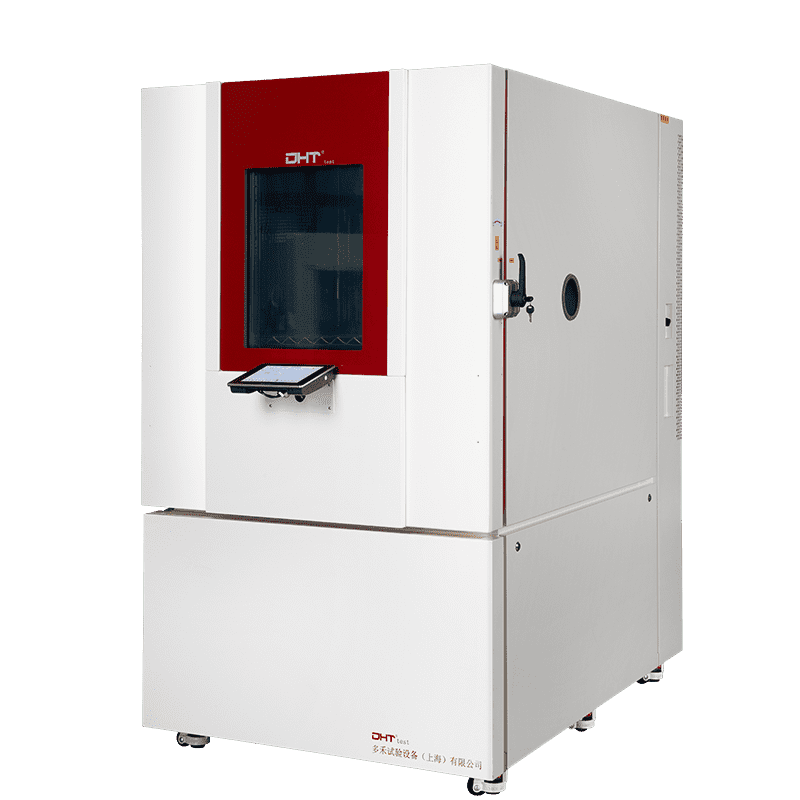Written by Robin
Senior Engineer, Doaho Test (DHT®)
As materials testing continues to advance in precision and sophistication, ozone—a trace yet highly reactive gas—is drawing increasing attention across industries. Though present in the atmosphere at extremely low concentrations, ozone can rapidly cause irreversible damage to polymer materials such as rubber, cable sheathing, coatings, and elastomers. In particular, its damaging effects on these materials are especially pronounced.
To address this threat of “hidden aging,” the ozone test chamber was developed. By simulating low‑concentration ozone exposure in controlled conditions, it accelerates the aging process of materials and evaluates potential long‑term performance degradation in real‑world scenarios. How exactly does ozone degrade materials, and how does an ozone test chamber operate? This article provides a clear, professional explanation.
Ozone Degradation: A Subtle but Powerful Threat
In many industrial designs, the primary focus is on aging caused by temperature extremes, UV exposure, or humidity—often overlooking the hidden threat posed by ozone in urban or outdoor environments. Although typical ambient ozone levels are below parts per million (pphm), even trace amounts can cause microscopic surface cracking in rubber or elastomer components within days or weeks.
This phenomenon is commonly observed in automotive seals, tire sidewalls, or cable jackets—materials exposed persistently to outdoor air. Ozone molecules’ high reactivity triggers chain‑degrading reactions in polymer structures, gradually reducing elasticity, weakening material integrity, and eventually leading to failure.
Because this aging process is gradual, invisible, and hard to replicate with standard aging tests, accelerated simulation using an ozone test chamber becomes essential to identifying potential risks during the product development phase.
An Ozone Test Chamber Is Not Just an “Ozone Generator”
A common misconception is that the function of an ozone test chamber is simply to release ozone. In reality, a well‑designed ozone test chamber is a sophisticated environmental control system, designed to guarantee test accuracy, repeatability, and relevance to real‑world applications.
A professional ozone test chamber typically includes:
-
Ozone generation and concentration control system: Continuously generates ozone and maintains target concentrations (usually 10–1000 pphm) via closed‑loop feedback control.
-
Temperature and humidity regulation: Simulates various environmental conditions to reflect how ozone interacts with materials in realistic environments.
-
Sample loading and tensile fixture: Supports static or dynamic stretching, exposing samples to ozone under load to closely emulate actual service conditions.
-
Data acquisition and control interface: Enables real‑time parameter monitoring, historical data recording, and remote access for traceability and test management.
In essence, an ozone test chamber is a high‑precision environmental testing apparatus. Its core strength lies in “controllability” and “stability,” as even minor fluctuations in ozone concentration, temperature, or airflow can significantly influence the rate of material aging and undermine test reliability.
Expanding Applications: From Rubber Products to Advanced Material Validation
Originally used primarily for assessing the ozone resistance of rubber products, the utility of the ozone test chamber has expanded significantly alongside advances in material science and increasingly complex service environments. Today, its applications encompass nearly all non‑metal materials exposed to outdoor or industrial atmospheres.
Common applications include:
-
Automotive manufacturing: Evaluating the ozone‑cracking resistance of door seals, windshield molding, tire sidewall elastomers, and other exterior rubber components.
-
Cable and electrical equipment: Verifying the degradation and cracking behavior of insulation and sheathing materials under ozone exposure.
-
Aerospace and rail systems: Testing long‑term aging performance of high‑performance elastomers and polymer structural components.
-
Medical devices and consumer electronics: Some polymer parts, intended for prolonged exposure, may be especially vulnerable to ozone‑induced aging.
-
R&D labs and certification bodies: Conducting standardized material performance testing according to ASTM D1149, ISO 1431, and related protocols.
These tests are essential not only for early‑stage material screening but also for product quality control and batch consistency verification, forming a core part of many companies’ reliability‑engineering frameworks.
How to Choose a Truly “Usable” Ozone Test Chamber
Not every device marketed as ozone‑testing capable truly meets the rigorous requirements of industrial aging tests. When selecting an ozone test chamber, consider the following key performance metrics and functional features:
-
Stability and responsiveness of ozone concentration control: Excessive drift or delayed response can compromise reproducibility.
-
Coupled temperature and humidity control: The ability to simulate high‑humidity or high‑temperature ozone environments significantly enhances realism.
-
Sample capacity and testing flexibility: Can the chamber accommodate different sample sizes and shapes? Does it support both static and dynamic tensile testing?
-
System safety and reliability: Features such as ozone leak alert systems and overload protection are essential.
-
User interface and data export capabilities: Is the control panel intuitive? Can it integrate with your laboratory’s LIMS or data management systems?
Additionally, it’s wise to work with manufacturers experienced in this specialized field, as they are more likely to support standard compliance, offer in‑field testing case studies, and provide robust after‑sales service—all of which are vital for implementing a structured, reliable testing process.
Conclusion: From “Aging Tests” to a “Quality Assurance Framework”
Ozone aging testing is far more than a standalone experimental procedure—it serves as a critical pillar in establishing long‑term reliability evaluation systems for materials and products. Using an ozone test chamber, R&D engineers can anticipate material vulnerabilities early in the design phase; test engineers can base material selection and supplier evaluation on data; and quality engineers can build scientifically driven lifespan models.
Given the increasingly stringent global market standards, ignoring ozone‑induced aging may lead to product recalls, performance failures, or even damage to brand reputation. Proactive ozone aging validation is the non‑negotiable baseline for any company that prioritizes product quality.
If you’d like assistance identifying an ozone test chamber appropriate for your specific application, or want to explore case studies and technical specifications aligned with ASTM/ISO standards, please feel free to contact us. We provide more than equipment—we support you in building a reliable, consistent, and sustainable testing ecosystem.
People also ask
What is the purpose of an ozone test chamber in materials testing?
An ozone test chamber simulates long-term ozone exposure under controlled conditions to accelerate material aging and evaluate durability. It’s especially useful for detecting the degradation of rubber, elastomers, and polymers that are vulnerable to ozone in outdoor or industrial environments.
How does an ozone test chamber differ from a basic ozone generator?
Unlike a simple ozone generator, a professional ozone test chamber includes precise ozone concentration control, environmental simulation (temperature/humidity), and real-time monitoring systems. It ensures test accuracy, repeatability, and relevance to real-world applications.
What types of products and industries benefit from ozone aging testing?
Ozone aging tests are widely used in automotive, aerospace, cable insulation, medical devices, and consumer electronics industries. These tests help identify early material weaknesses, support quality control, and comply with standards like ASTM D1149 and ISO 1431.


